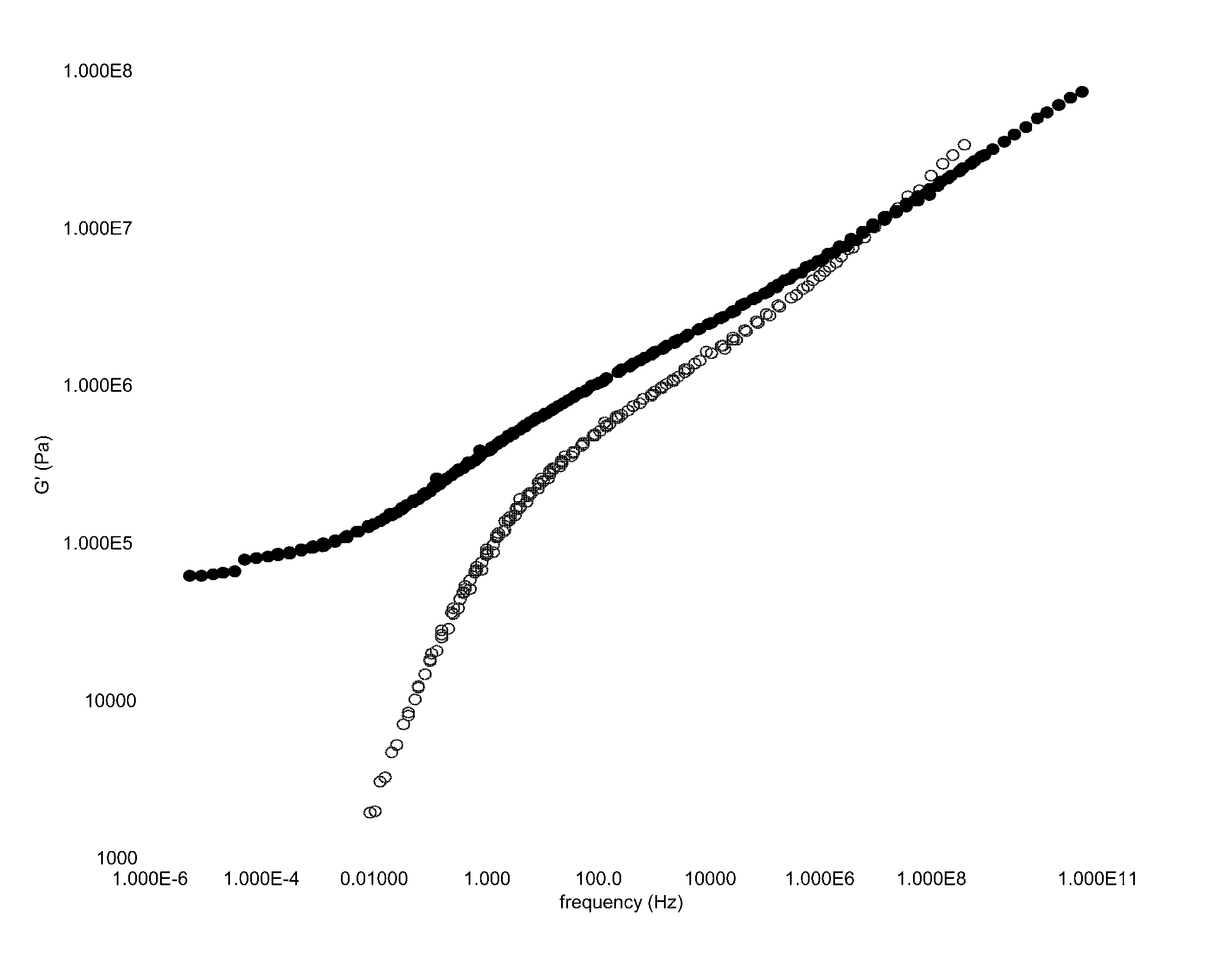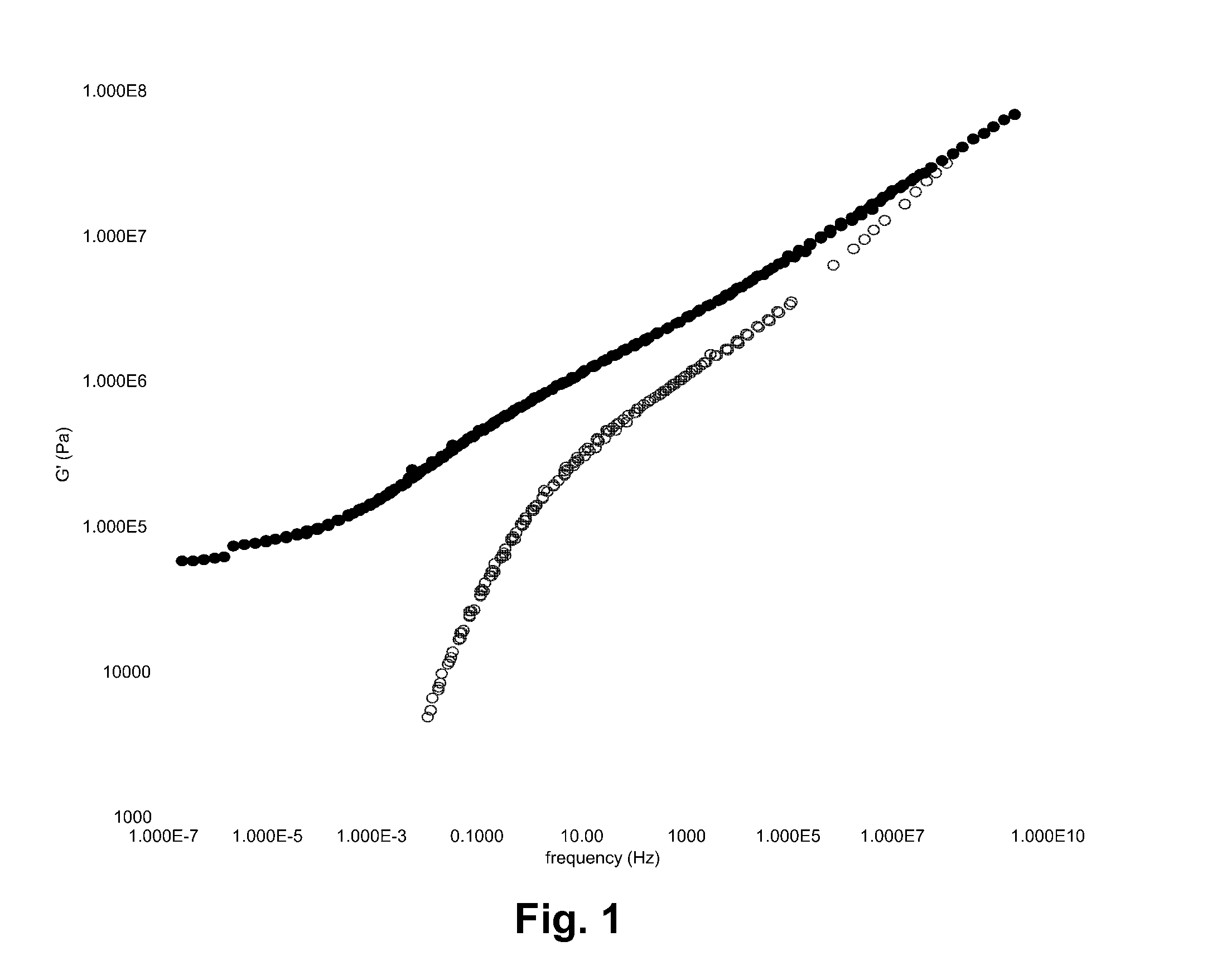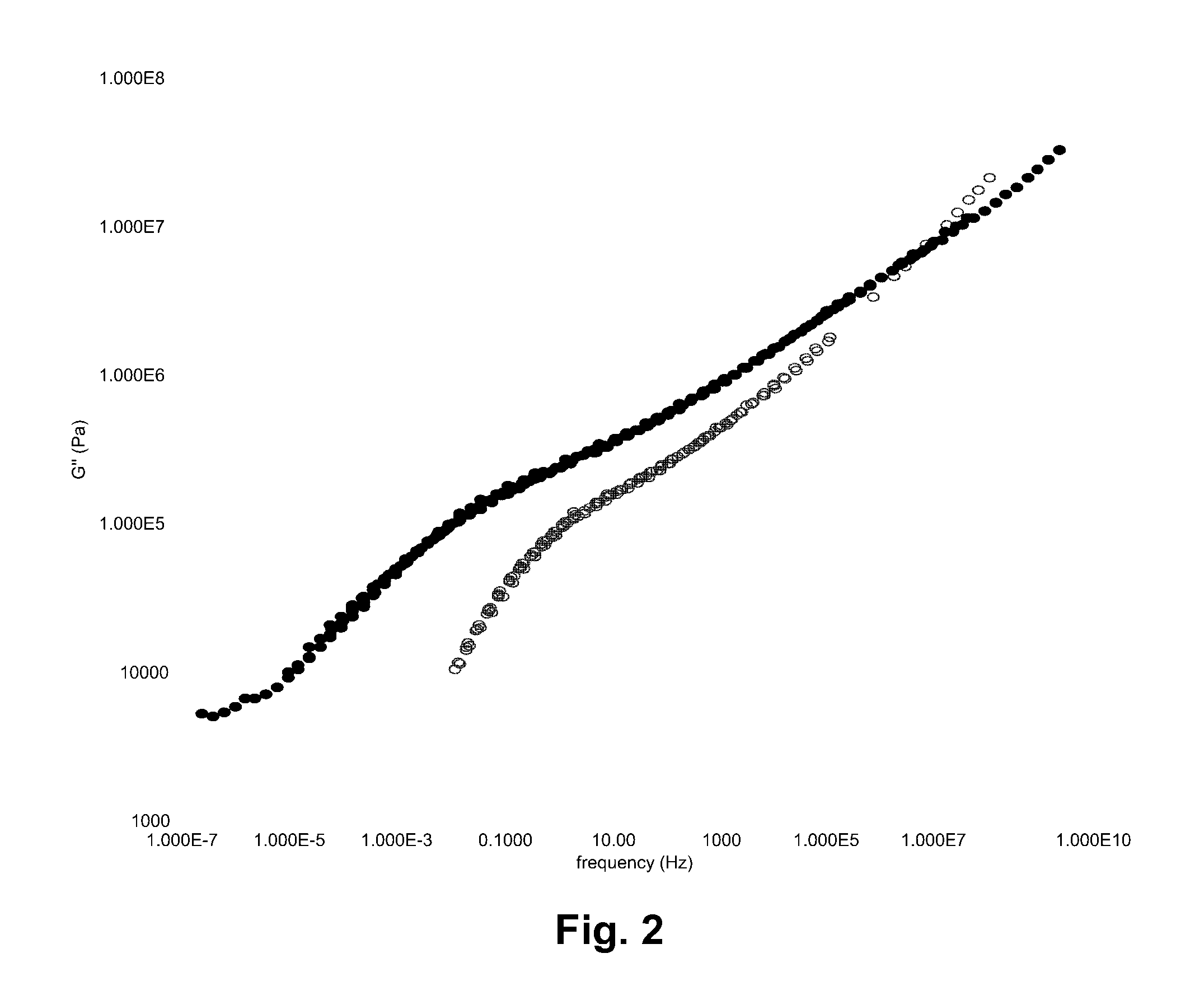Electro-optic displays, and materials for use therein
a technology applied in the field of optical displays and materials, can solve the problems of inadequate service life of optical displays, unable to meet the needs of instrumentation, and gas-based electrophoretic media are susceptible to the same types of problems, and achieve the effect of normal decrease of the module of an adhesive layer
- Summary
- Abstract
- Description
- Claims
- Application Information
AI Technical Summary
Benefits of technology
Problems solved by technology
Method used
Image
Examples
example
[0071] Tests were conducted on cross-linked and non-cross-linked forms of a custom polyurethane lamination adhesive of the type described in U.S. Patent Publication No. 2005 / 0107564 (this material had a molar mass of 52,000, with Mw / Mn equal to 2.7-3.2 and was in the form of an aqueous latex). The cross-linking agent used was diglycidyl aniline at a concentration of 20,000 ppm. To ensure complete cross-linking, the cross-linked samples were stored at 60° C. for 120 hours before testing.
[0072] Cross-linked and non-cross-linked samples of the adhesive were coated at a thickness of about 17 μm on to 2 inch (51 mm) squares of metal foil. For the dynamic mechanical analysis (DMA) measurements described below, the layer of lamination adhesive was removed from the metal foil, and folded to produce a layer of adhesive approximately 600 μm thick, which was then subjected to DMA testing using a TA Instruments DMA tester. The adhesive samples were subjected to DMA testing at a constant stress...
PUM
| Property | Measurement | Unit |
|---|---|---|
| storage modulus | aaaaa | aaaaa |
| thickness | aaaaa | aaaaa |
| thickness | aaaaa | aaaaa |
Abstract
Description
Claims
Application Information
 Login to View More
Login to View More - R&D
- Intellectual Property
- Life Sciences
- Materials
- Tech Scout
- Unparalleled Data Quality
- Higher Quality Content
- 60% Fewer Hallucinations
Browse by: Latest US Patents, China's latest patents, Technical Efficacy Thesaurus, Application Domain, Technology Topic, Popular Technical Reports.
© 2025 PatSnap. All rights reserved.Legal|Privacy policy|Modern Slavery Act Transparency Statement|Sitemap|About US| Contact US: help@patsnap.com



